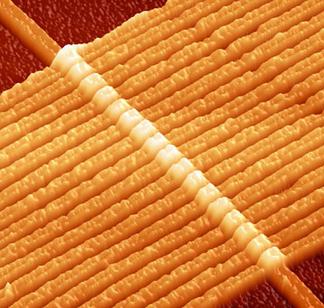Memristors
Enlarge text Shrink text- Work cat: Yakopcic, Chris. Memristor devices, 2011:t.p. (memristor devices) p. iv (memristors)
- HP Labs website, viewed Dec. 19, 2011:(An ideal memristor is a passive two-terminal electronic device that is built to express only the property of memristance; the component will "remember" the last resistance that it had, and when the flow of charge starts again the resistance of the circuit will be what it was when it was last active)
- OCLC database, Dec. 19, 2011:(memristors; memristor devices )
- Whatis.com, viewed April 10, 2012(Memristor; a type of resistor in which the flow of electrical current in an electronic circuit is determined by the amount of charge that has previously flowed through it; memory resistor)
A memristor (; a portmanteau of memory resistor) is a non-linear two-terminal electrical component relating electric charge and magnetic flux linkage. It was described and named in 1971 by Leon Chua, completing a theoretical quartet of fundamental electrical components which also comprises the resistor, capacitor and inductor. Chua and Kang later generalized the concept to memristive systems. Such a system comprises a circuit, of multiple conventional components, which mimics key properties of the ideal memristor component and is also commonly referred to as a memristor. Several such memristor system technologies have been developed, notably ReRAM. The identification of memristive properties in electronic devices has attracted controversy. Experimentally, the ideal memristor has yet to be demonstrated.
Read more on Wikipedia >
 Topic
Topic



